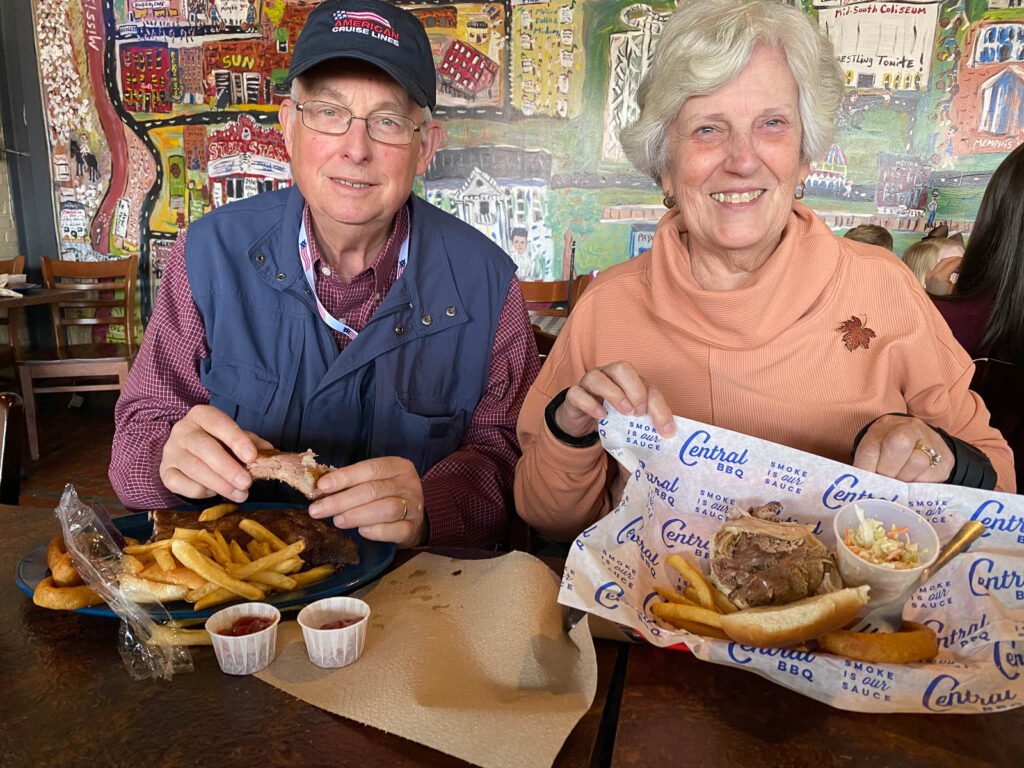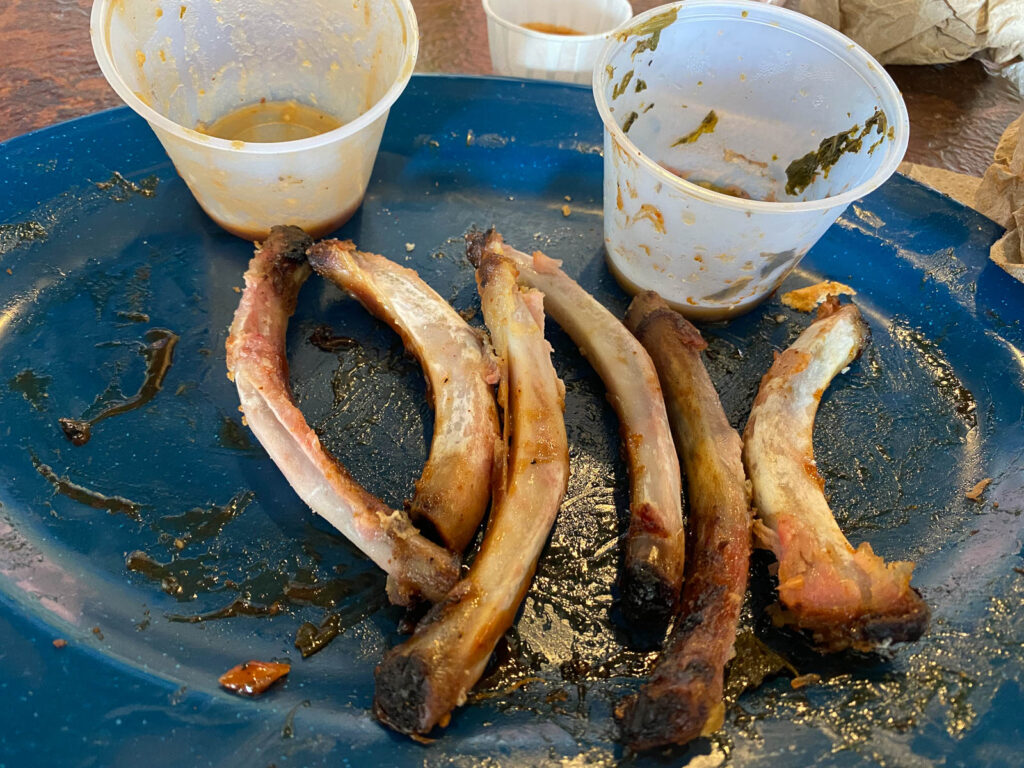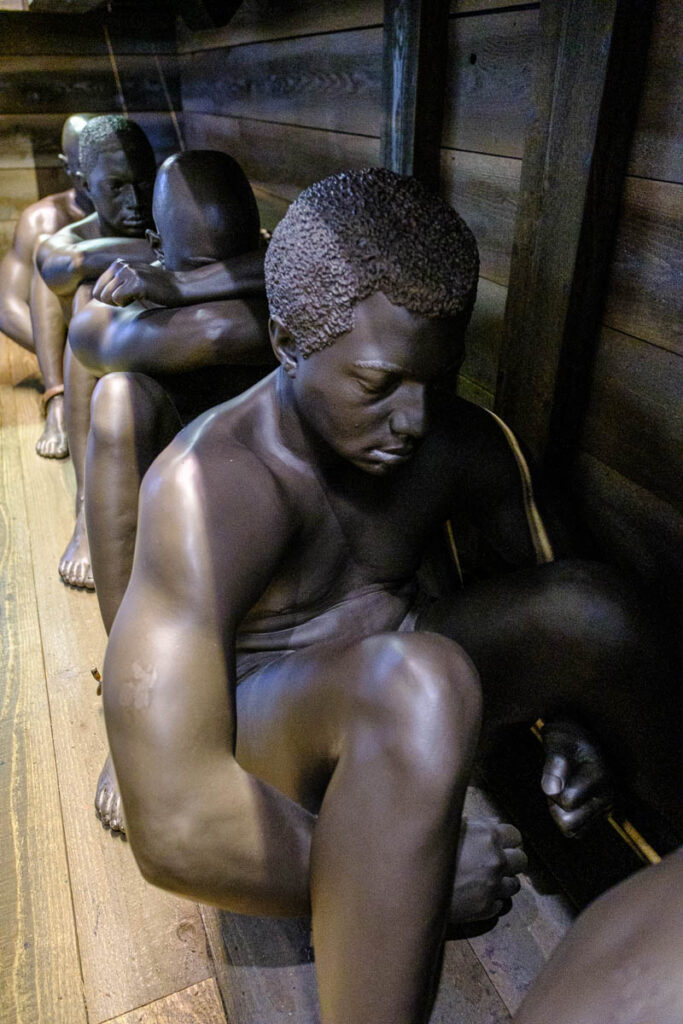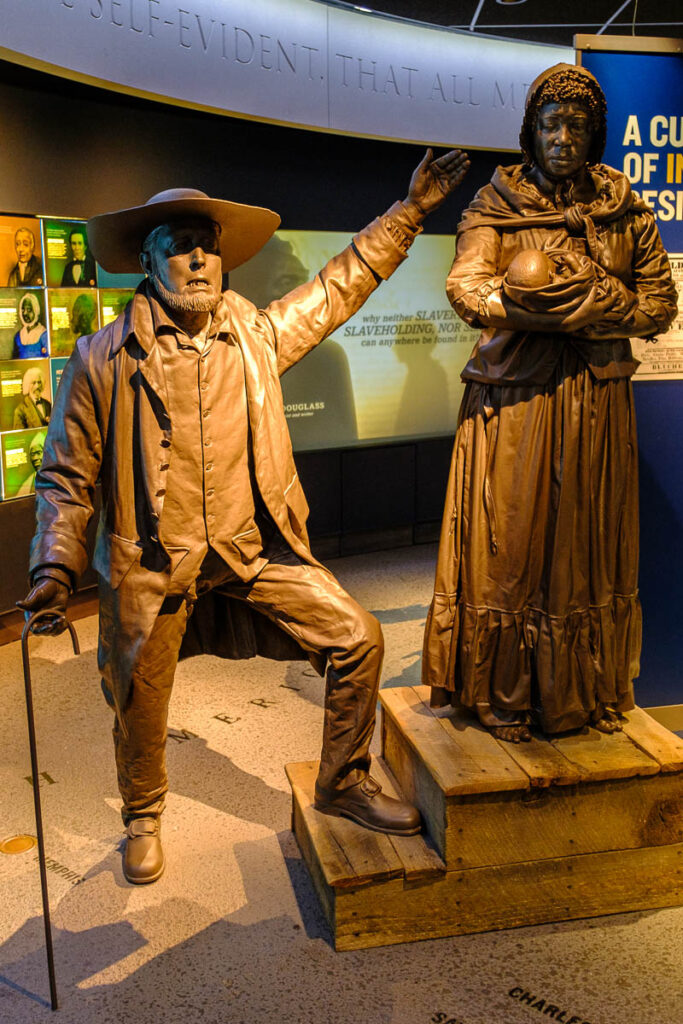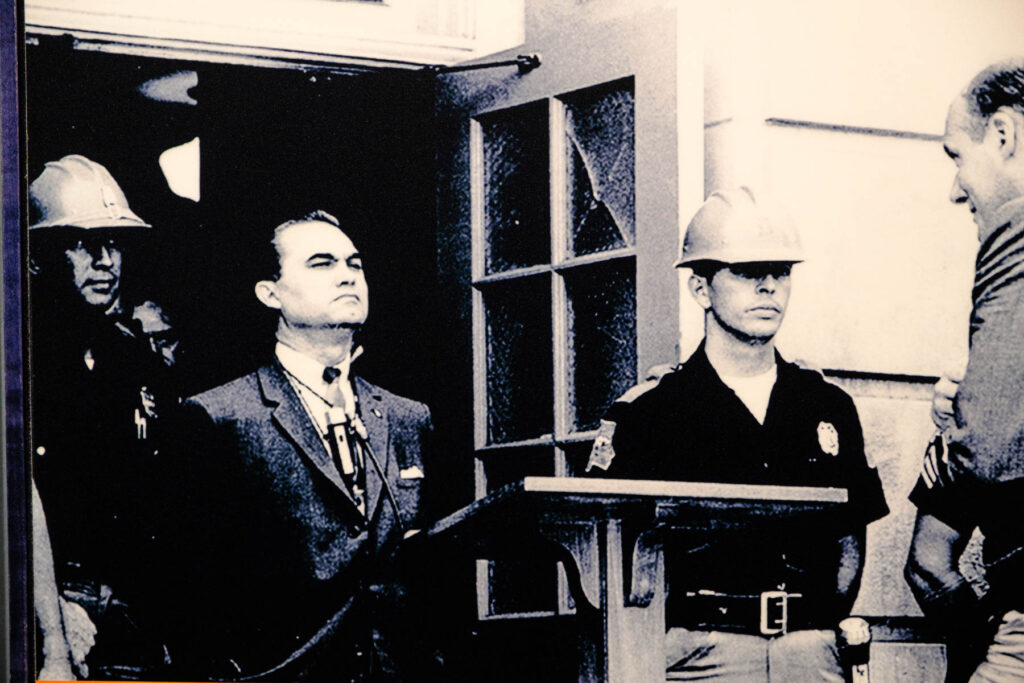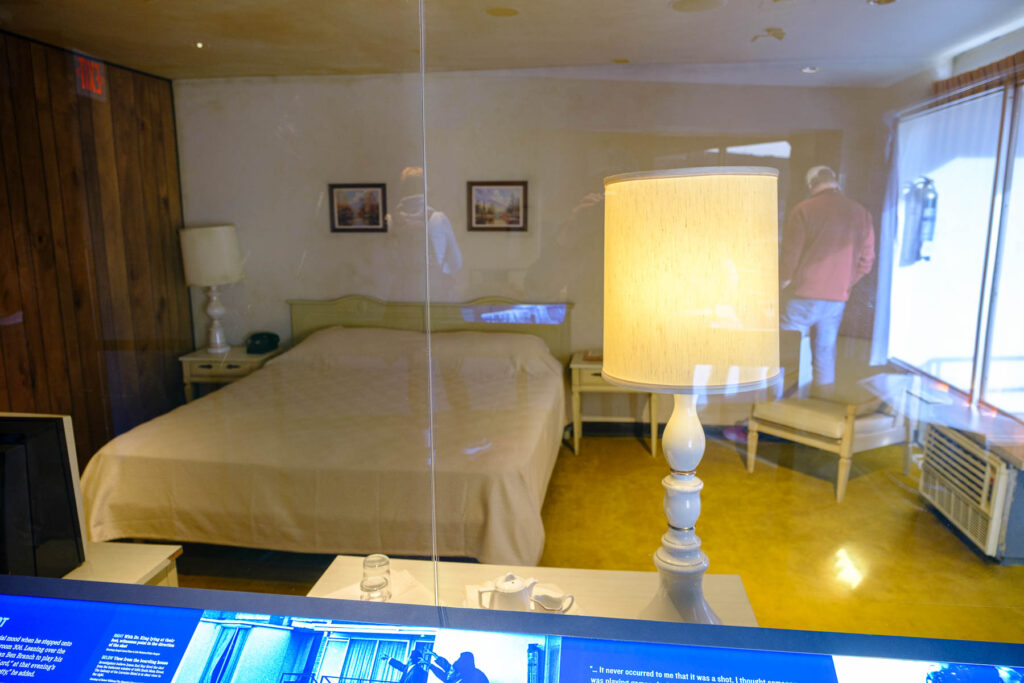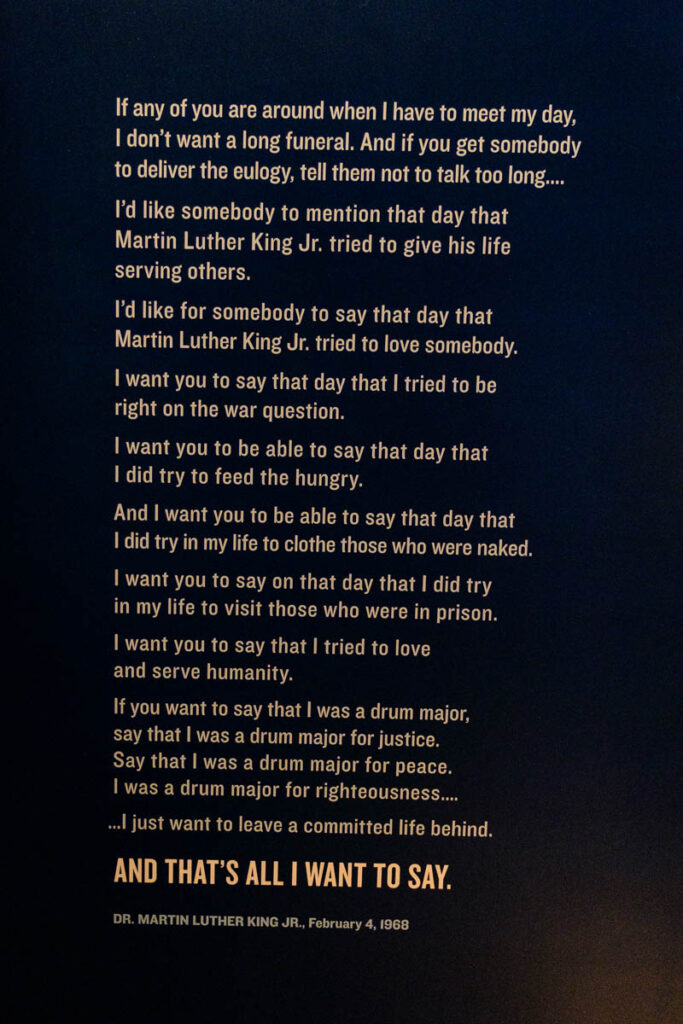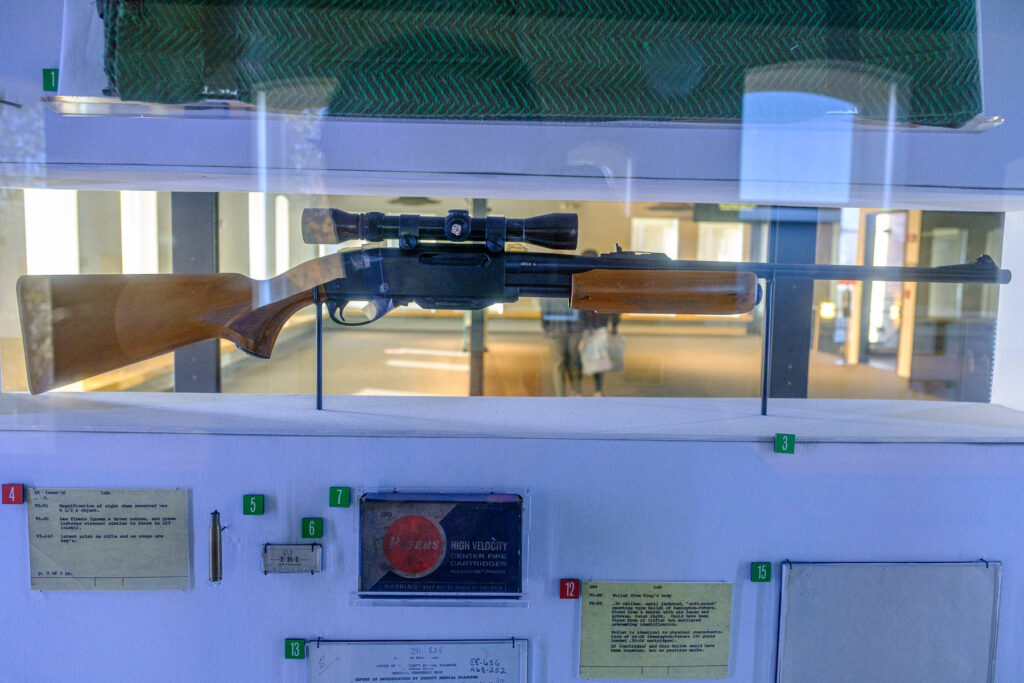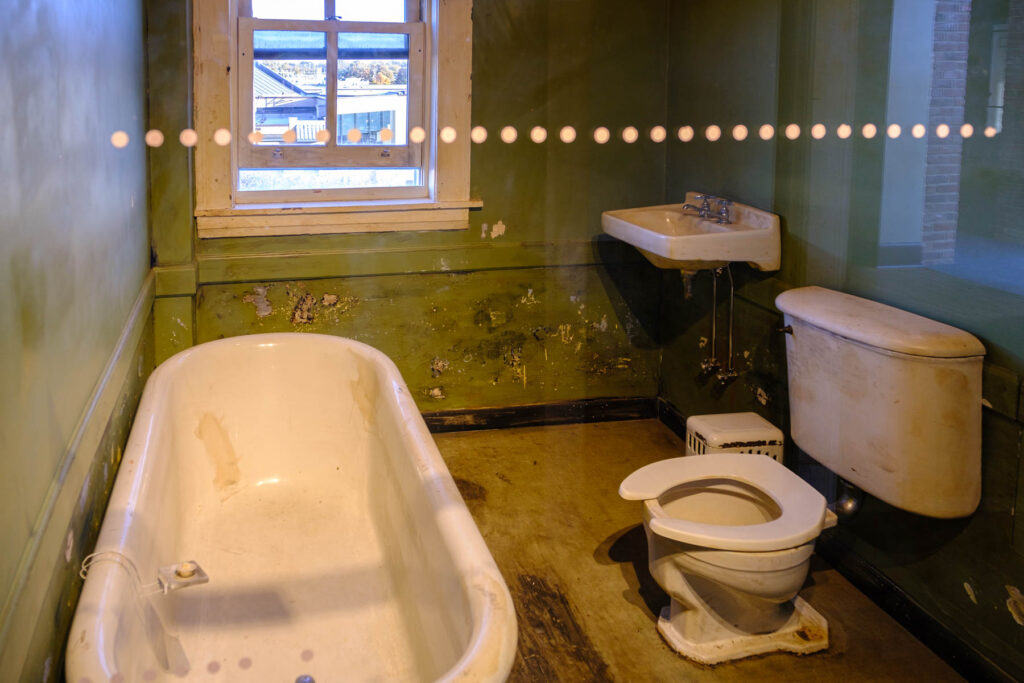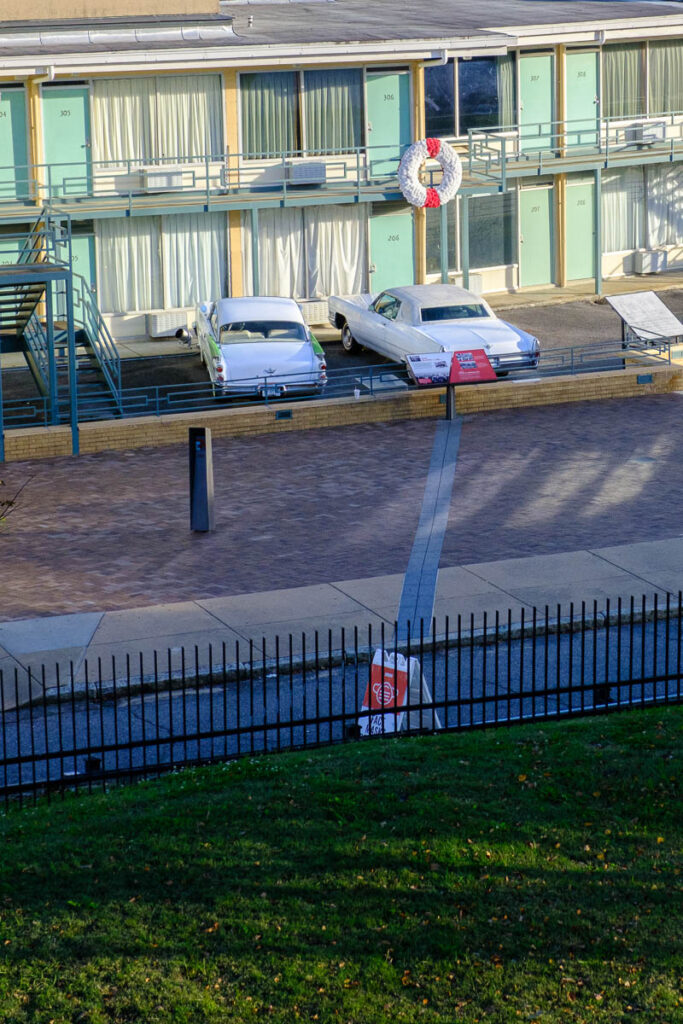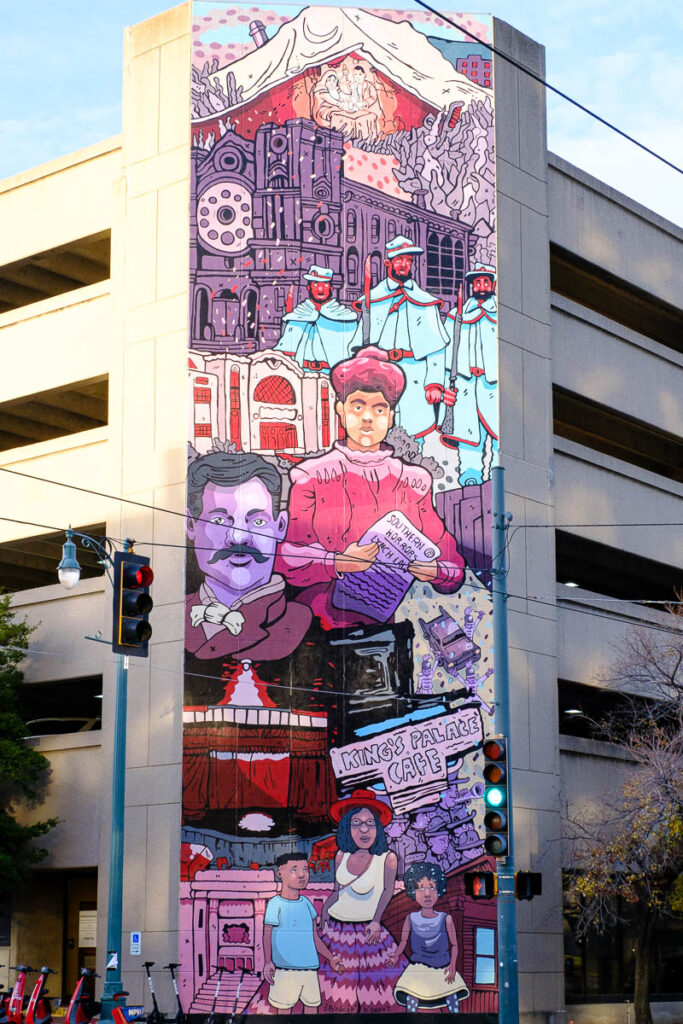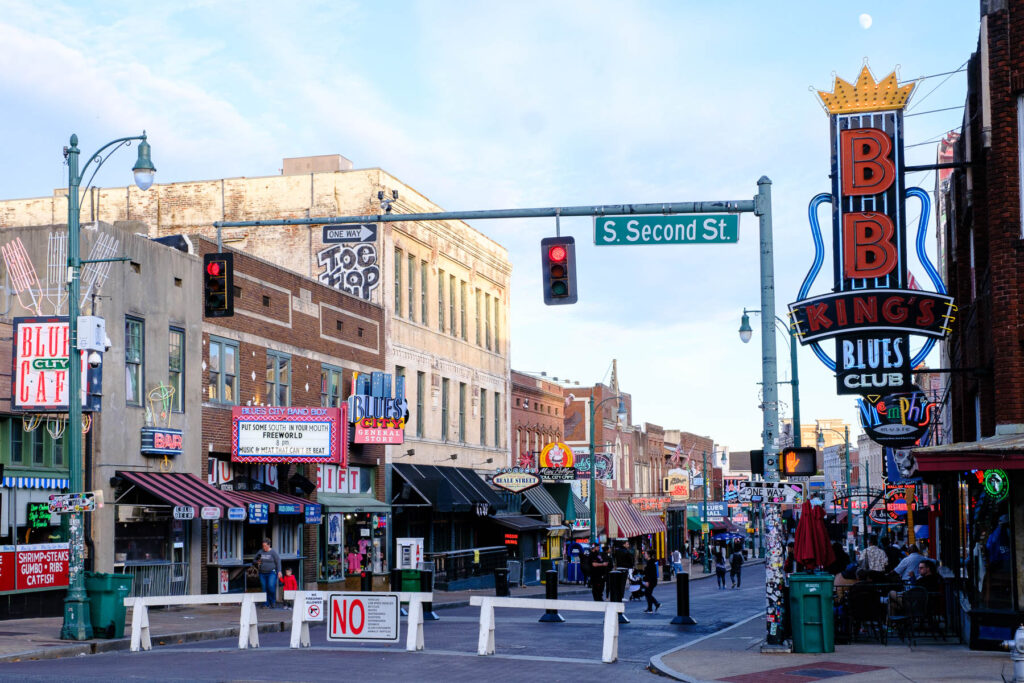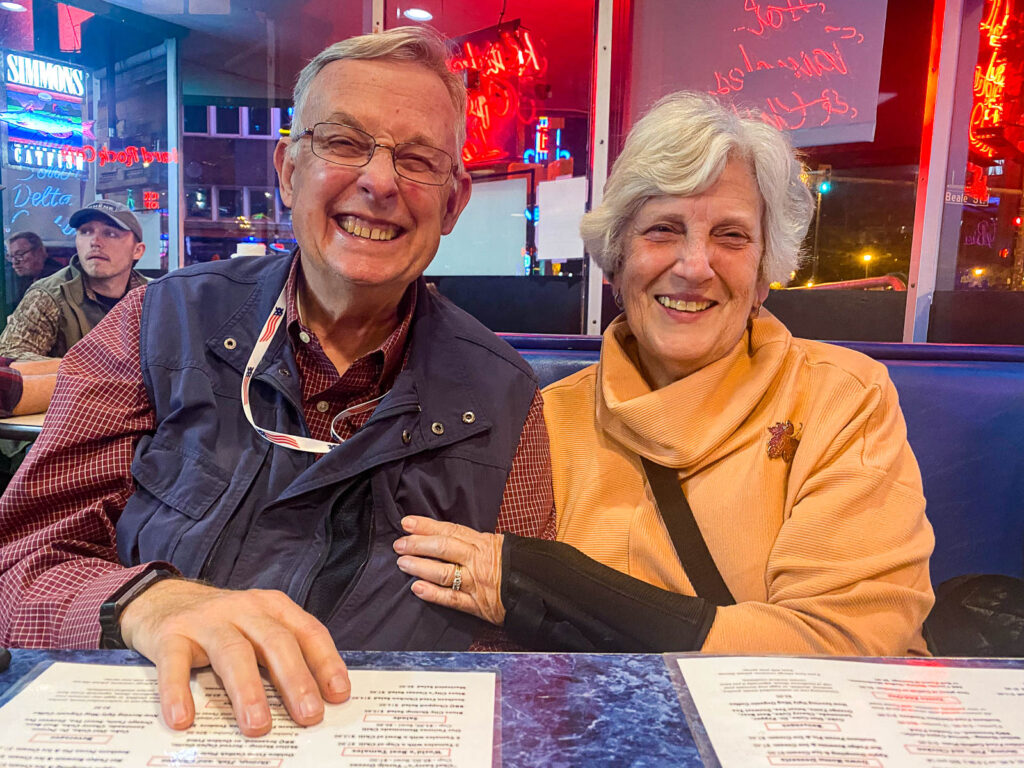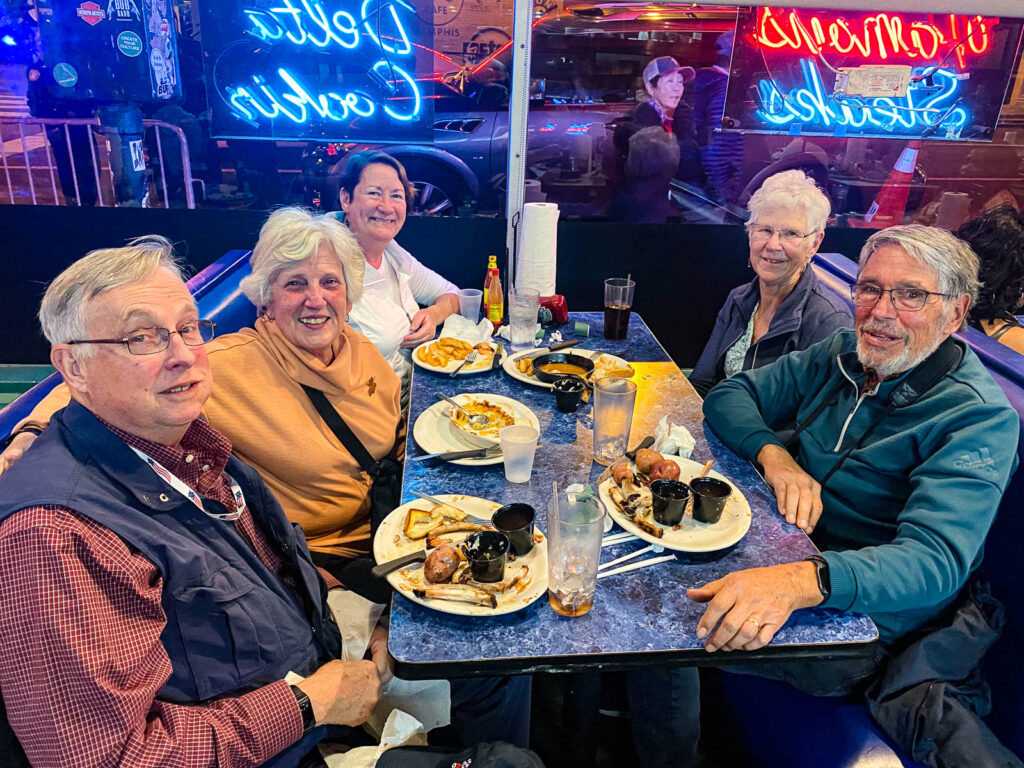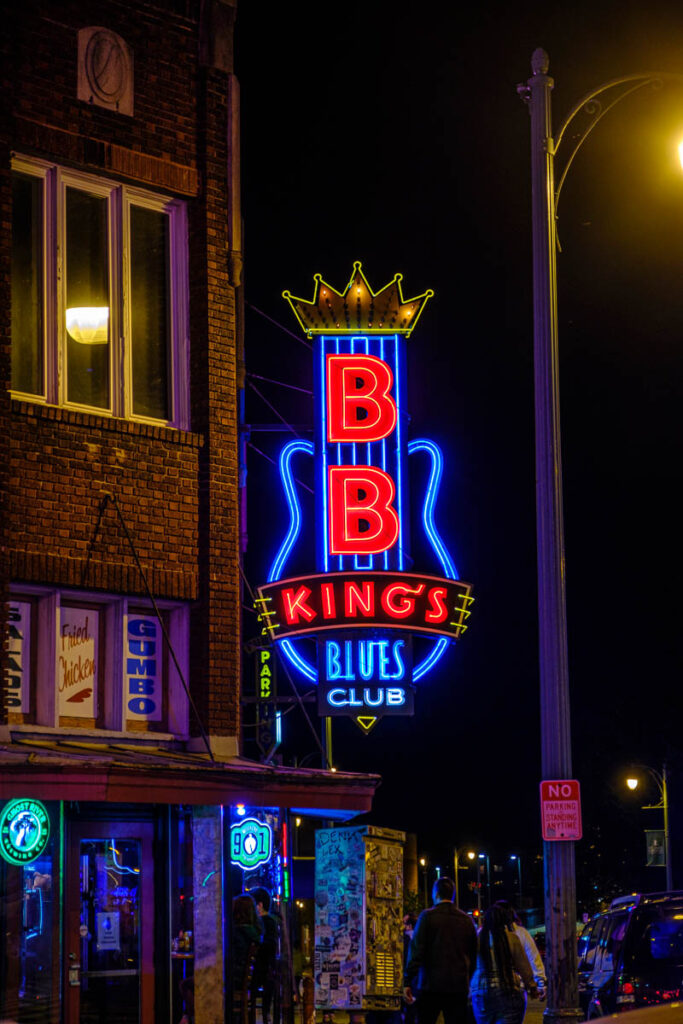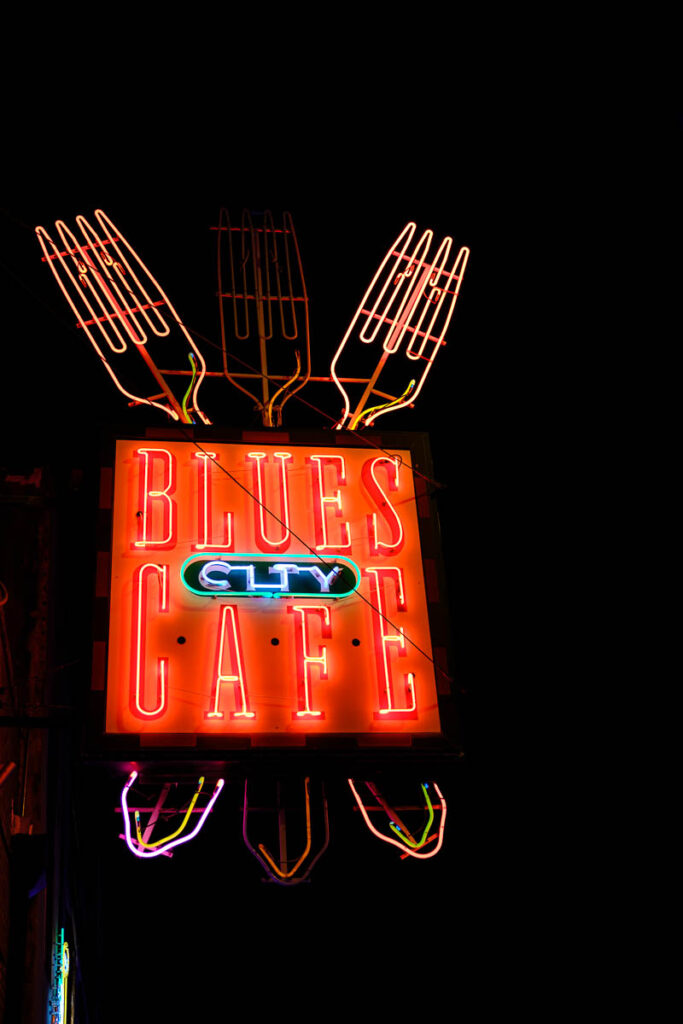We’re off the boat, the shuttle got us to Graceland before 9 AM and from there we found our way back to town to the National Civil Rights Museum.
Getting these was a slight challenge. I tried for a 5-passenger Uber (none available) or Lyft (one promised but the reservation failed). The bellhop found us a taxi with a suitable vehicle albeit at a price more than twice the Uber fare for two vehicles. But we got there.
This civil rights thing has got me scratching my head. I sort of get the years leading up to the Civil War. Slavery was the engine that propelled the tobacco, rice, cotton and sugar/rum industries to worldwide success. White Europeans created the belief that Blacks were simply inferior beings, capable of only menial labor. Thus, we have an economic motivation and a belief sysstem, no matter how flimsy, that justified the practice of slavery. It would be easy for a plantation owner to grasp the thin reed of inequality belief so as to avoid economic disaster.
Slavery was practiced in all original thirteen colonies. There’s a book that tells the story of the Hempsteads of Connecticut and their slave (Judy is a Hempstead although not of that line). Abolitionists in the North rejected the inequality premise. But those in the North didn’t have the economic motivation to retain the premise that those in the South did. Hence the Civil War.
OK, I get it. It was a terrible miscarriage of justice and morally repugnant. But there is a thread of logic that explains why slave owners did as they did.
The Civil Rights Museum gave a very detailed account of slavery and the subsequent struggle for civil equality for African Americans in the U.S. I had heard much of the pre-war and war-time story in the context of the sugar and cotton plantations and the Vicksburg battlefield we’ve visited this week.
The museum goes much farther, detailing the Jim Crow era, starting in 1896 “separate but equal” doctrine established by the Supreme Court in Plessy vs. Ferguson. Southern states used the doctrine to establish separate-but-unequal conditions, to suppress Black voting rights, educations and in general to laws that ensured the life for Blacks would continue as second-class citizens. Jim Crow laws continued until segregated schools were declared illegal by the Supreme Court in Brown vs. Board of Education in 1954. Johnson-era passage of the Civil Rights Act (1964) and Voting Rights Act (1965) followed.
Throughout the 1950s, 60s and 70s various groups, the NAACP, Martin Luther King’s Southern Christian Leadership Council and a host of others fought for civil rights through demonstration and protest movements. The response from Southern government officials was swift and violent. The museum details the atrocities in words, images and video. And, of course, the senseless assassination of Malcolm X and Martin Luther King are highlighted, given that the museum is housed in the former Loraine Motel where King was killed. We ended up spending five hours, with a break for lunch, emersed in this narrative.
So here’s what I don’t get: While there may be some convoluted way of understanding slavery, what is the motivation that leads to the hatred embodied in Jim Crow policies and the violence with which Black demands for equality were met? Whites no longer relied on Black slave labor for economic viability. Blacks couldn’t be seen as an economic threat, taking away White jobs. The only thing that remained was the belief that blacks were inferior beings and should therefore be treated as such. Given the evidence that average Blacks and Whites, coming from equal circumstances (education and wealth) perform equally well in society, why doesn’t the “I’m better than you” belief collapse? And why is the hatred so strong?
I don’t get it. I’m just about ready to take the 1850s plantation owner with 200 slaves as being morally superior to Governor George Wallace of Alabama, Sheriff James Clark of Selma, the Klu Klux Klan and so on.
It’s a great museum. It opened more questions than it answered, and that’s a good thing.
So now we’ve looked at slavery, Jim Crow and the civil rights struggles. We’ve touched on the spate of assassinations in the 1960s – JFK, RFK, Malcolm X, Martin Luther King, etc. We’ve seen how Elvis brought African American music to White audiences and launched interramal music making in America. And then there was Vietnam, Johnson’s Great society, the Cold War and the counter-culture of the 1960s going on all at once. It’s hard to believe I lived through all of that!
The other part of the day revolved around Memphis Barbeque and Blues. We interrupted our museum tour for lunch at the next-door Central BBQ – ribs and pulled pork for the most part. After leaving the museum around 4 PM we waddled down Main Street to Beale Streat, home of the Memphis Blues scene. We had a drink at an Irish pub where I tried to introduce my fellow travelers from the North to pork rinds. Everyone took a small “bragging rights” taste but no life-long converts in this crowd.
The section of Beale Street dedicated to the “blues” encompasses two blocks. It’s a mini Bourbon Street and, like its New Orleans cousin, it’s a tourist destination. Live music is provided in most restaurants and bars but it’s no longer the hotbed of innovative jazz and blues development it was back in the day.
By now it’s pushing 6 so we walked the streets looking for a place that a) had a menu we could all agree on; b) offered live music and c) offered live music that wasn’t too loud. A security guard in front of one restaurant pointed us to BB King’s restaurant for music and good food or to the Blues City Café for good food but no music. BB King hits you up for $10 cover charge per person; nix that. Blues City got our business and I’m embarrassed to report that Steve and I had a second half-rack. They played recorded music and the service was fast once we got in.
Our taxi friend had us “home” by 8, we claimed our bags and are safe in Elvis’s tender embrace for the rest of our trip. Tomorrow: Graceland and then home.

